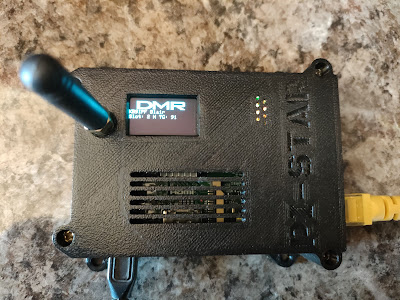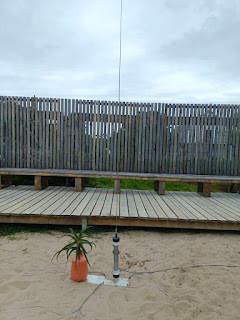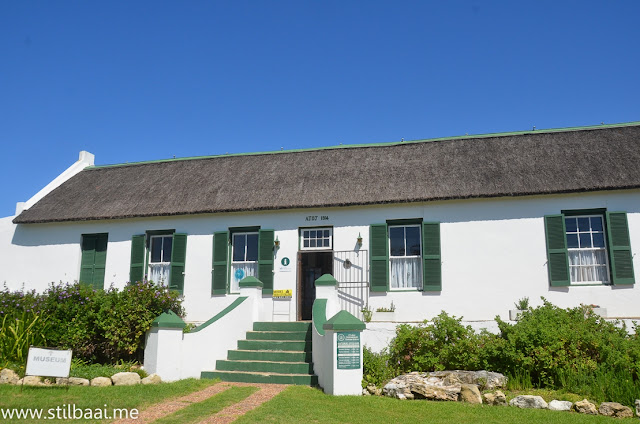Intro:
In the world of DMR, there are two ways to gain access to the now worldwide network. One is a repeater, the other is using a hotspot. Which method is best is determined by several factors. One of the main factors is how far you are from the local repeater. If you are not within range of a repeater, a hotspot may be your only choice.
Both a hotspot and a repeater can be used to connect to a DMR network. So let's take a look at the networks.
The Brandmeister Network is the commonly associated with hotspot operation, while the DMR-MARC network is associated more with repeater operation.
What is a digital radio hotspot?
“Hotspots” are digital-only, small, low-power radio transceivers that connect to reflectors on the network. They are simple “gateways” that take the digital data from a radio and process it so that it may be streamed on the Internet. They are purely digital and have no ability to process analog audio – that’s all done by the radio!
Do you need a hotspot for DMR?
A prerequisite for participation besides an assigned DMR-ID is the availability of a DMR-capable repeater within range. If there is no repeater in your range, you have the possibility to get the relay "in your own four walls" with the help of a "hotspot".
I am not going to go into full detail here regarding a hotspot. Die videos underneath provide more than enough information on what a hotspot is and also the different hotspots.
Videos:
What is a Ham Radio Hotspot | Digital Voice Ham Radio - Ham Radio 2.0
Build your own DMR/DStar/Fusion hotspot for CHEAP – Dennis AD6DM
MMDVM Hotspots - What you need to know - VK4NGA
Features:
High performance 32-bit ARM processor
Black metal case
Supports DMR, P-25, D-Star and System Fusion
Onboard LEDs to show status (Tx, Rx, PTT, Mode)
Up to 10mW RF power.
Size and Weight:7 x 3 x 2.5 cm and 50g
The only other items I needed was a Pi Zero, SD Card and the Pi-Star Firmware. These I sourced locally. To cut it short I installed and plugged everything together and I was up and running in no time. The hotspot worked like a dream although is was a bit sluggish at boot up. This I attribute to the Raspberry Pi Zero V1.3. I later switched to a Raspberry Pi 3b and a 3-D Printed case for the hotspot. The 3b is far quicker than the Zero. It booted in no time.
Hot plugging because of Loadshedding killed my hotspot:
Everything went well until one day a spat of loadshedding/ caused the Pi to "freeze". I could not shut down the hotspot (yes it was still running) other than to hot-uplug the power. This is where all the trouble started and here is a warning: Never ever hot-plug or unplug your Hotspot Raspberry Pi Power Plug or Ethernet plug. This can and in my case caused a few nasty issues which I eventually solved after hours of fiddling around and re-installing new firmware. I also found out the hard way that, do not run your hotspot during loadshedding if you do not have a battery back-up (UPS) and a reliable Internet connection.
Problems and solution:
Lets get to the real problems and the solution. Last week I decided to install a Raspberry Pi Zero 2 W board as I needed the Pi 3b for another project. In any way to use a Pi 3b with a Jumbospot is really a waste of resources. I also decided to install everything in the original metal case. When I installed the first Pi Zero (V1.3) I saw that the bottom of the Pi PCB was nano micros away from the metal surface of the case. Way back then I used insulation tape to prevent the PCB from making contact with the metal. This surely did the trick. I installed the Pi Zero 2 and the JumboSpot PCB into the metal cabinet. Screwed everything in place and closed the lid. Added the antenna and plugged everything in. Switched on and used the radio to access DMR via the hotspot. Everything worked great.
After about half an hour I wanted to use the radio on TG91. I tried to activate TG91 but nothing happens. The Radio TX and the hotspot TX and RX lights comes on but nothing else. No TX/RX, audio or OLED Screen activity forthcoming from the hotspot or the radio. I could however excess the Pi-Star Firmware via SSH and the Dashboard. BrandMeister also indicated that all is well under My Devices and the Logs did not give any errors. Rebooting did not result in any change. I had to shutdown the hotspot and then restart it after about 5 minutes. After startup the hotspot would work flawlessly for about 5 minutes and then the same problem occurred as discussed supra. It point blank refuses to work after 5 minutes. Needless to say I looked for all sorts of things in the firmware that could cause this problem. I updated and upgraded but the problem remained. I even re-installed an older version and the latest version of the Pi-Star Firmware. No joy. I tried everything that I found online but to know avail. The hotspot was like a donkey that did not want to be move.
Well the only choice was to go back to the Pi3 b. This resulted in further issues. Now BrandMeister indicate that the password was not recognized or wrong. The funny part is that in My Devices on the BrandMeister website the connection under the hotspot ID was green and on the main Pi-Star dashboard everything was green that should be green. I changed the password to a new one. This also did not resolve the issue. I decided to ask on the Amateur Radio 101 Telegram Group if anybody experienced the same issue at some stage or the other. Nope this seems to be a first. I received a few pointers from Christie ZS4CGR and Curtis ZS6CMO. It was getting late and I decided to follow the advise of Christie which suggested that it could be the Internet aka loadshedding that caused the problem as he and other experienced intermittent Internet connections on that specific day.
Shutting everything down I decided to call it a day and decided that I would give the hotspot another try early the next morning when the Internet seems to be more reliant. Before I moved out of the Shack I decided to revert back to the Raspberry Pi Zero 2 and the metal cabinet. Everything installed I closed the Shack door and went to bed.
Do or die:
Early the next morning around 04h00 I was up and ready in the Shack. Either it works or it goes to the dust bin or junk box. Needless to say nothing has changed the problem still remained. Sitting back in my chair I looked at the metal cabinet and a thought came to mind. I will remove the lid and fire the hotspot up. Well nothing happened, still the same result as the day before, but with a new issue. The OLED Screen would not light-up. It stopped working. This is now really getting bad. I shutdown and disconnected all the cables. Looking at the JumboSpot PCB another thought came to mind. Why would the OLED not light-up as it did the day before. Nothing has changed overnight hardware or firmware wise. I hauled out a magnifying class and started to examine the PCB.
Joy and Jubilation.....It works!!
All the solder joints and OLED Screen looked fine but when I looked in underneath the OLED Screen PCB from the side a light bulb moment appeared. Difficult to see I decided to use a small leverage screwdriver to carefully lift the OLED Screen PCB up from the JumboSpot PCB about 2mm in height. Plugged everything back in and together and started the hotspot. Well it booted OK and worked fine but what will happen after a 5 minutes time lapse? Will the donkey attitude still be there. Time will tell. Five minutes passed and I anxiously pressed the PTT. Low and behold the hotspot jumped into action. After 10 minutes and later 20 minutes the hotspot was still working as it should. No errors and the donkey was up and running. Joy at last!! I checked all the logs for errors but there were none and the hotspot is still up and running now nearly 3 days without any issues. Problems solved!!
What caused this erratic behavior and errors?
In my opinion the plugging from one raspberry pi to another must have over time caused the OLED Screen PCB to move down a fraction touching the JumboSpot PCB slightly at first and then "killing" it eventually when I moved back to the Pi Zero 2, the evening before the OLED completely "died". To prevent the OLED Screen PCB from pressing against the JumboSpot PCB I installed two homemade plastic spacers between the two boards. (See the photo with red circles in this regard) Thankfully nothing was damaged and all the Pi's, OLED and JumboSpot is working as they should.
Hope this helps somebody that experience the same issues
I hope that this topic might be of assistance to others who might in future experience the same issues as I did. I would however suggest that you add the plastic spacers when you first install/build the Jumbo Spot Hotspot. This will save you many hours of fault finding and frustration. Despite all the issues I must admit that I learned a great deal trying to solve the issues. Sometimes it is worthwhile when something like this happens as you learn and gain very useful experience on how hotspots work.
Images: (Click on images for larger view.)
























































